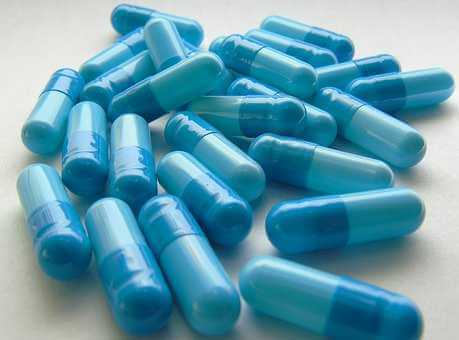One of the most common issues that results out of sports related activities is developing arthritis. Also falls and trauma can injure the cartilage within a joint and, if it is not provided sufficient time to heal, chronic pain and persistent disability can follow. Additionally, damage to the bone surface can start a biological process that results in joint degeneration. This, in turn, often leads to rheumatoid arthritis or osteoarthritis. The most common form of arthritis is Osteoarthritis. Osteoarthritis is a degenerative joint disease that comes as a result of excessive trauma to the joints, infection of the joints, or simply by old age.
Osteoarthritis, as well as affecting the joints, decreases the amount of cartilage in your bones. When Osteoarthritis attacks the cartilage, your bones try to repair themselves. The bone then remodels itself and in the process, a bone cyst forms.
Osteoarthritis has many symptoms that can easily send a warning flag your way. If you experience any type of stiffness or difficulty moving the joint and it causes pain, then you should consult your doctor because this may be an early sign of osteoarthritis. The most common joints that are affected with Osteoarthritis are: the fingers, hip, spine, and knees. If you feel like your fingertips are engorged but aren’t causing you any pain, don’t just brush it off—see a doctor immediately.
Osteoarthritis isn’t the only form of arthritis. There is also rheumatoid arthritis. Rheumatoid arthritis causes severe inflammation of your joints. It can also strike various other organs in your body, making your immune system unknowingly attack your own body’s tissue.
The official term for this type of disease is “autoimmune,” where you have antibodies in your blood that target your own body. Generally, when your own immune system attacks itself, inflammation occurs. Luckily, while rheumatoid arthritis is still considered a chronic illness, many people claim to experience extensive periods of time without any symptoms. The main symptom of rheumatoid arthritis is inflammation of any joint or organ.
Other symptoms include lack of appetite, fatigue, low energy, fever, or stiffness of your joints. Many patients describe the stiffness as being most dominant in the morning hours. Joints may also become tender or red while your symptoms have flared up.
Medications used for treating arthritis have some significant issues. Simple over the counter pain relievers like aspirin or acetaminophen often do not provide enough relief from pain and inflammation.
Most prescription analgesics are addictive, which makes them problematic for long term chronic pain relief. Regulations and insurance policies add to the stress of trying to get rid of the pain using traditional pain medications. So many people have turned to alternatives like supplements to help manage long term chronic pain for conditions like arthritis.
There are pros and cons to using supplements to manage pain. Make sure to work with your doctor on any pain control regimen and let him know what supplements you are taking and how much the dosage is. Just because something is over the counter, does not mean it is totally harmless, especially in combination with certain medications. Always make sure your doctor is kept up to date on all over the counter substances you are taking, including supplements.
Some of the commonly used supplements for joint support include:
Chondroitin sulfate
Glucosamine sulfate
Calcium
Vitamin D3
Ginger
Turmeric
Omega-3
Green tea
A few other options:
SAMe
MSM
Stinging nettle
Bromelain
Vitamin E
Devil’s claw
One of the most well known supplements is Glucosamine sulfate. Glucosamine is found naturally in the body’s joint cartilage—helping keep it healthy and lubricated. The shells of shrimp, lobster, and crab provide the basis for these supplements. Glucosamine is believed to help slow deterioration of cartilage, relieve arthritis joint pain, and improve joint mobility.
Glucosamine sulfate is a chemical found in the human body. It is used by the body to produce a variety of other chemicals that are involved in building tendons, ligaments, cartilage, and the thick fluid that surrounds joints.
Joints are cushioned by the fluid and cartilage that surround them. In some people with osteoarthritis, the cartilage breaks down and becomes thin. This results in more joint friction, pain, and stiffness. Researchers think that taking glucosamine supplements may either increase the cartilage and fluid surrounding joints or help prevent breakdown of these substances, or maybe both.
Some researchers think the “sulfate” part of glucosamine sulfate is also important. Sulfate is needed by the body to produce cartilage. This is one reason why researchers believe that glucosamine sulfate might work better than other forms of glucosamine such as glucosamine hydrochloride or N-acetyl glucosamine. These other forms do not contain sulfate.
Chondroitin is also found naturally in cartilage and bone. Chrondroitin sulfate supplements are derived from cow tracheaor pork byproducts. Chondroitin is said to reduce joint pain and inflammation, improve joint function, and slow progression of osteoarthritis. Most studies have been done on knee arthritis.
Chondroitin is believed to enhance the shock-absorbing properties of collagen and block enzymes that break down cartilage. Like glucosamine, this supplement is thought to help cartilage retain water, keep joints lubricated, and possibly reverse cartilage loss. There is some evidence to support not taking these two supplements together, and to make sure you take the sulfate version of glucosamine to get the maximum benefit.

